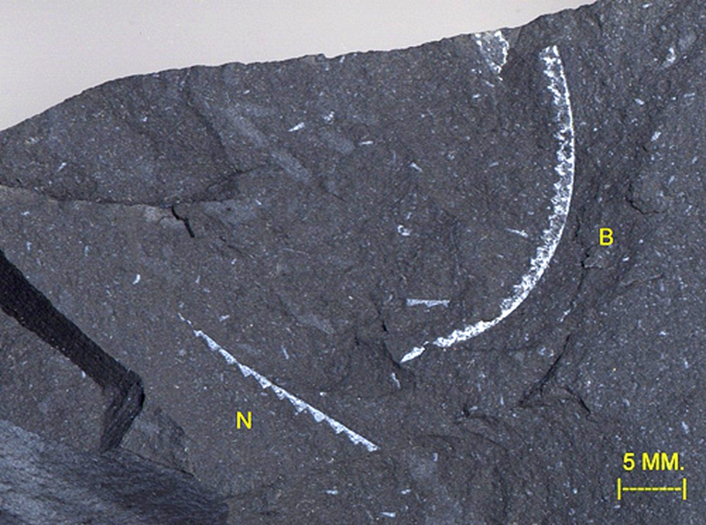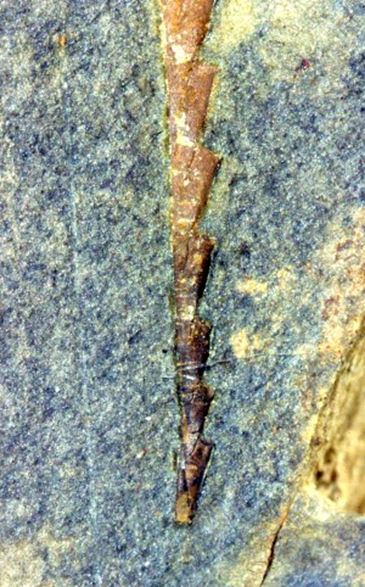Tan Mai Fm
Type Locality and Naming
The type section is Tan Mai Section, situated along the car road crossing Tan Mai Village (N = 21° 34', E = 107° 43'). The Tan Mai Fm bears the name of a village situated 12 km north of Ha Coi Townlet. The stratotype of the formation extends along the road from Mong Cai Town through Tan Mai to Than Phun villages. Coeval with the Co To Fm in more seaward locations.
Synonym: Hệ tầng Tẩn Mài: Jamoida A.I. (Dovjikov A.E. et al. 1965) (Cm3 - O); Phạm Văn Quang el al. 1969 (S); Trần Văn Trị et al 1970 (O – S1), 1973, 1975, 1977, 1979 (Or S); Nguyễn Công Lượng et al. 1980 (O-S), 1983 (O - s); Đinh Minh Mộng 1980 (0 3 Si); Vũ Khúc, Bùi Phú Mỹ et al. 1990 (O - S); Lưcmg Hồng Hược in Tống Duy Thanh et al. 1995 (O - S); Lê Hùng et al. 1996 (O3-S). Terrains anciens de Mon Cay: Lantenois H. 1907 (O - S); Saurín E. 1956 (S). - Schisles satinés de Port- Courbet'. Patte E. 1927 (Antẻ Uralien). Hệ tầng Cô Tô (part.): Phạm Kim Ngân in Dương Xuân Hào et al. 1980 (O3 - S1). Lương Hồng Hược in Lê Hung el «/.1987 (O3-S); Phan Cự Tiến et al. 1988 (O -S). Hệ tầng Tấn Mài (part.): Phạm Kim Ngân et al 1986 (O3-S1)
Lithology and Thickness
Sandstone and Claystone. The formation is characterized by rhythmic and banded structure, terrigenous sediments. The stratotype has been subdivided into two parts: Lower one includes grey, greenish-grey fine- to medium-grained quartz-rich micaceous sandstone containing flattened pebbles interbedded with mica schist, micaceous siltstone and claystone (phyllite-grade), 1000-1200 m thick; claystone (phyllite-grade) gradually increases upwards. Upper part occur green-grey mica schist and micaceous phyllite with some interbeds of micaceous sandstone, about 1000 m thick. The Tan Mai Fm has a stable lithological composition, and a slight change expresses itself by an upward decrease of fine-grained beds in the section, but their southwestward increase in space.
Relationships and Distribution
Lower contact
In its distribution area the Tan Mai Fm forms the oldest sediments, therefore its relation with older formation is unavailable.
Upper contact
It underlies unconformably younger formations, such as the Do Son Fm (now called Van Huong Fm) and Ha Coi Fm, that have been observed in the Vinh Thuc and Cai Chien islands. Regionally, the next younger unit is the Kien An Fm of late Silurian.
Regional extent
The formation occurs in a band lying along the southeast side of the NE-SW trending Yen Tu - Tien Yen - Tan Mai Fault with a width of about 7 km and extending discontinuously for hundreds of km, and there are also exposures in the Cai Chien and Vinh Thuc islands.
GeoJSON
Fossils
Silurian graptolite collections, found in its upper part and Silurian spores occurring in the upper part. Siltstone beds lying near the base of this part yield the following spores Acanthotriletes sp., Lophozonotriletes sp., Simozonotriletes sp., Stenozonotriletes sp. and Punctatisporites sp.
[Figure: Tan Mai Fm (O3-S2 tm): Silurian: Graptolites Bohemograptus tenuis (images courtesy of Prof. Ta Hoa Phuong, Vietnam Natl. Univ. Hanoi)]
[Figure: Tan Mai Fm (O3-S2 tm): Silurian: Graptolites Pristiograptus pseudodubius (images courtesy of Prof. Ta Hoa Phuong, Vietnam Natl. Univ. Hanoi)]
Age
Depositional setting
Its terrigenous sediments of rhythmic, and banded structure containing graptolites of the deep marine biofacies and some tuffaceous beds allows one to attribute it to a back-arc marine basin situated near an old continental margin.
Additional Information

